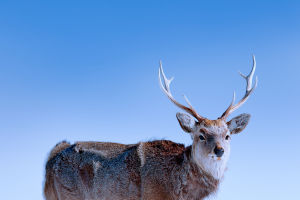Lions are the largest social carnivores and the largest felines. They live in pride, which are collective groups. Usually, a pride consists of two to eight females, one to six males, and several of their cubs, similar to a human family.
However, one difference between lions and humans is that lionesses have inherent pride, and for generations, they will live in their birth pride and territory.
In contrast, male lions wander to find a suitable pride and invade and occupy lionesses to become the lion king, giving birth to their own offspring with the pride's lionesses.
Lion pride usually has a fixed hunting area known as a "territory." Male lions are responsible for patrolling the boundaries and maintaining the territory's security. The scent, mark, and roar announce their presence and deter intruders.
They expel stray lions from their territory and kill and drive away other exotic predatory competitors. On the other hand, lionesses are mainly responsible for hunting, raising, and caring for their cubs.
The male lion also participates in hunting, especially when hunting large game, which would be much more difficult without the male's participation. When the pride has an adequate amount of food, the pride members generally share the food together.
However, when the pride is low on food, the male lion will drive the lioness away and have priority in feeding, and the male lion will usually allow the cubs to eat together.
Unfortunately, the survival rate of lion cubs is not high. For example, according to statistics from the Sabean lion pride, the mortality rate of young lions is as high as 73.5%, and only about 26.5% of the cubs can survive to live past the age of three years to reach sexual maturity.
The greatest threat to young lions comes from the infanticide of their own kind, caused by male lions. When a new male takes over a pride, he will often kill any cubs that he did not father.
This is because by eliminating the cubs, he can bring the lionesses back into estrus, allowing him to sire his own offspring and ensure his genetic line continues. This threat can cause more than half of the mortality of cubs.
In the African savannah, hyenas, leopards, and buffalo have been observed killing young lions. The adult lion is the biggest threat to these animals, and when the lion is still small, it is wise to eliminate it early.
Once hyenas and other animals find single lion cubs, they will not hesitate to kill them. If the cubs miss the opportunity to return to the lion pride, it becomes challenging to start again.
Despite the natural competition for survival being quite cruel, the lionesses themselves are strong and vigilant during their solitary brood. The shelters they pick are also very secluded, making them less likely to be discovered by other opponents than we might think.
Lions are magnificent animals that live in pride. However, they face many threats, especially when they are young. Infanticide by male lions is the biggest threat to young lions. In addition, hyenas, leopards, and buffalo are also threats to young lions.
The law of survival is the law of the lion world, and it is essential for them to fight for survival in the African savannah.


